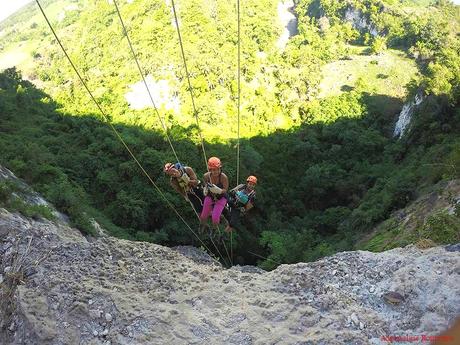
It is always a great feeling to be the first of something. Sweetie and I were quite proud and honored to be among the first real clients of Adventure Technology Outfitters to fully undertake the vertical bivouac adventure in Quezon, Bukidnon. Best of all, this amazing adventure is the first of its kind in the Philippines, which makes the experience even more special. Up here on top of the monstrous Kiokong White Rock Wall, we were treated to an encompassing vista, an excellent company of adventurers, and a deeper understanding of ourselves and of Mother Nature.
After a surprisingly sound and relaxing sleep, Sweetie and I slowly woke up to a silent and foggy morning. Visibility was so poor that we could not see a few feet ahead of our feet. But we knew for sure that we were just a few inches away from a very deep abyss.
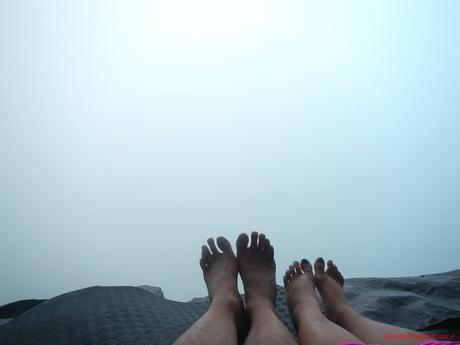
Vince and Tupe were still fast asleep, and so were everybody else! Sweetie and I are now confirmed early risers in the midst of everything! Hehehe!
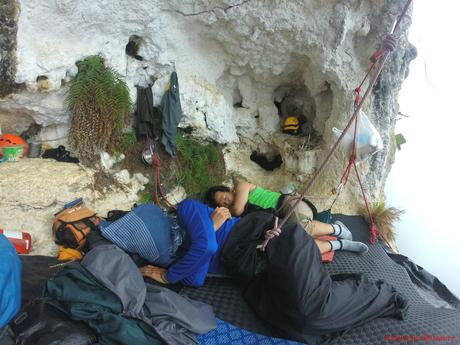
The rest of the team slept in another part of the ledge. Oh, and check that out: Jboy fastened a cool, comfortable hammock. Yes, we were green with envy at his comfort.
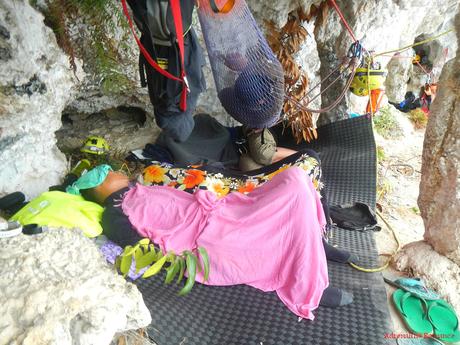
Almost half an hour later, Vince woke up and did his morning yoga and mantra. It has been 30 minutes since we woke up, but the fog didn’t leave. We decided to stay at the ledge and wait it out until the fog lifts itself away.
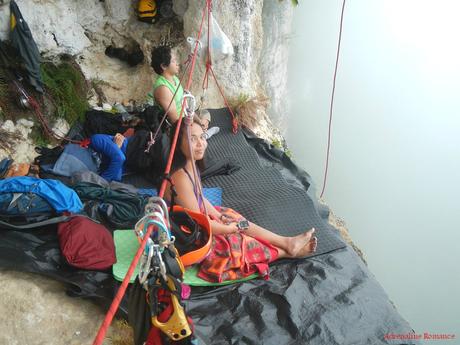
Just like any other human being, we felt the biological need to relive ourselves every morning. To do so, we need to walk to one side of the ledge to this slopey wooded area. This is the only area in the ledge that is exposed to the rain. Thus, whatever is disposed here will eventually be washed away. A portable toilet will be placed here soon.
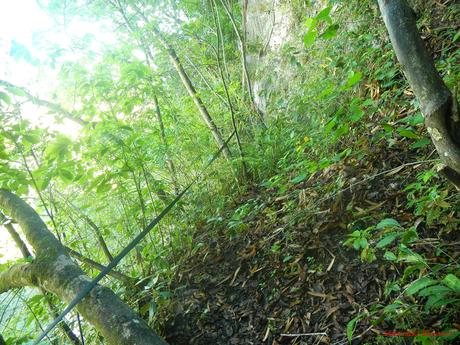
Now, you might wonder, how do we move safely around the narrow ledge? Well, we installed this safety line from one end of the ledge to the natural bathroom. The tough rope is rated for climbing and can hold an extraordinary amount of weight.
Of course, the rope also serves as a convenient line in which to clip in our equipment and stuff.
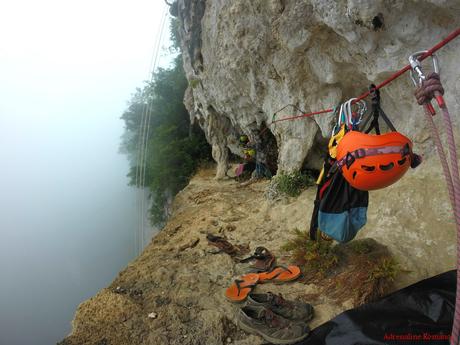
To move around, we need to clip our cow’s tail to the line. At least one of the cow’s tail’s carabiners should be clipped to the safety line at all times as a person moves along. Whenever there’s a point of connection, he should clip one carabiner to the other end of the line before disengaging the other. Ideally, both lines of the cow’s tail should be attached to the safety line.
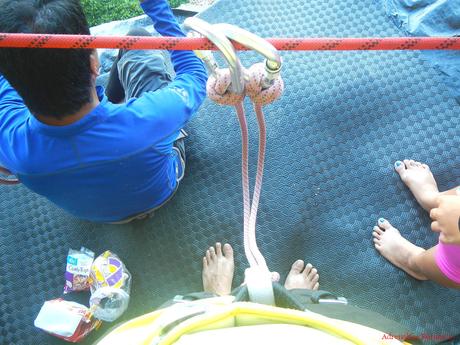
Vince moved along the ledge, clipping his cow’s tail to the safety line. The green carabiner, which is positioned against the rock column serves as a point of connection. For safety purposes and to prevent the rope from having too much slack, several points of connections are positioned along the ledge.
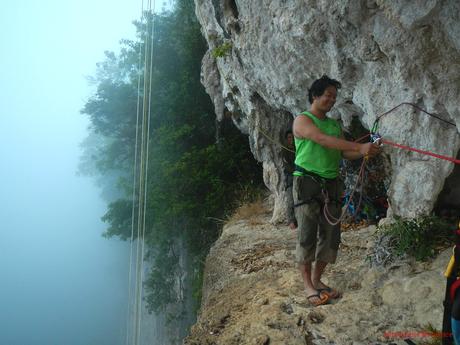
The safety line is held by a carabiner that is attached to a properly bolted hanger.
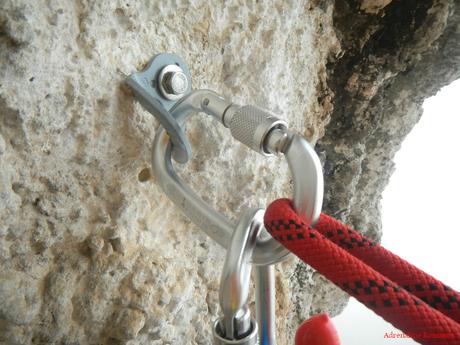
From the ledge, we can clearly see the anchors for our four main lines. Each line is tied to the other three, making then triple redundant. Additionally, climbers don’t need to be concerned about rope failure; each rope is over-engineered and can carry 2 tons. That is the weight of a car!
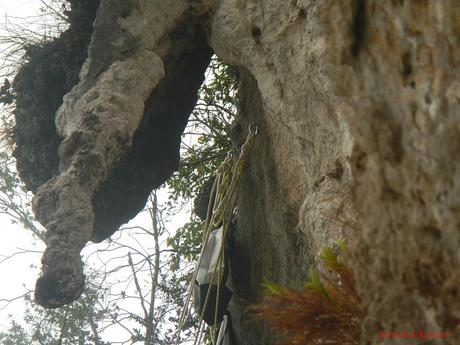
JBoy received an emergency call from a colleague, telling him to report to the office to work on some stuff. He went ahead of us by ascending the cliff.
At the top of the Kiokong White Rock Wall is a dirt trail that leads to the ground. The guides and their hired porters use the trail to haul the equipment to and from the cliff.
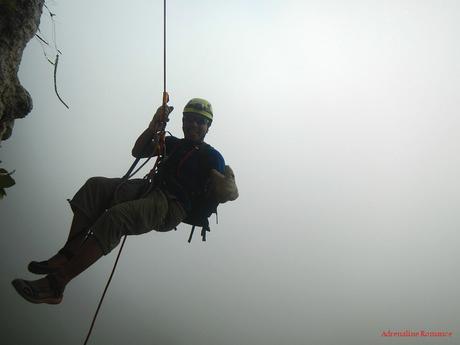
Here’s a nice video of his ascent. This also shows how an ascent is made using single rope technique (SRT).
While we ate a light breakfast of bread, fruits, and coffee, the sun eventually broke through the clouds and began heating up the land. The morning heat caused the fog to slowly dissipate, unveiling the spectacular view all around us.

Let’s check out the wonders of nature that were unveiled right before us. This large karst formation is right across the Kiokong White Rock Wall. It has almost the same height as the main rock wall and is an ideal for a second vertical bivouac site.
According to Mark, several locals who wish to do penance during Holy Week access the top of the cliff via a dirt trail behind the formation.
Adventure Technology Outfitters plans to fix a line from the top of the Kiokong White Rock Wall to the summit of this karst formation so they could establish a tylorean traverse adventure in the near future.

We can see the entire expanse of Barangay San Jose (modern name of Kiokong) from the ledge. As you can see, a large areas of this barangay are farms and coconut groves. It comes to no surprise as Bukidnon largely depends on agriculture as its main industry.
Also, we could see Mt. Pianggayungan in the distance. That mountain is in the neighboring province of Lanao del Sur.
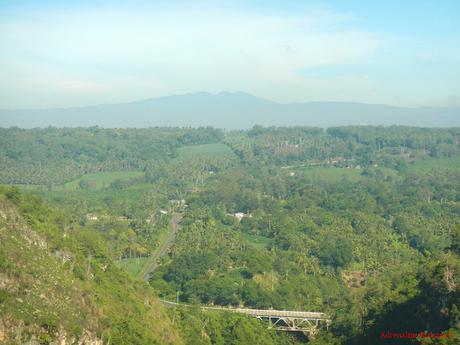
That’s the Pulangi Bridge spanning across the Pulangi River. That’s a cool place for rappelling and bridge jumping. Vehicles going to and from Davao cross this bridge.

The massive Kalatungan mountain is also visible from where we are. Mt. Kalatungan, the highest point in the range at 2,860 meters, is the 5th highest mountain in the country. We believe Bukidnon got its namesake due to the numerous and enormous mountains in the province.
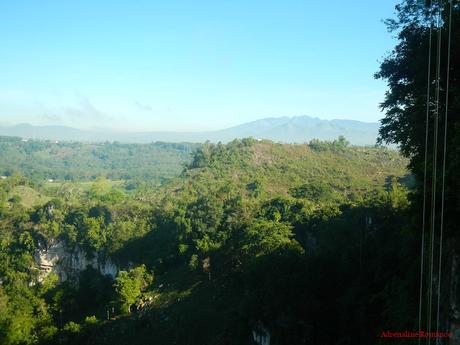
Near the Kiokong White Rock Wall is this large, pure limestone wall, which is as high as that of Cantabaco. The best thing about this wall? Yes, you guessed it: it’s bolted and protected for sport climbing!
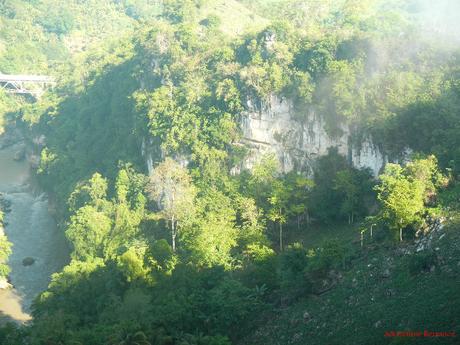
Now that the fog has completely dissipated, Sweetie can see what is directly below us. Below her feet are treetops! The photo below should now give you an idea of just how high we are!
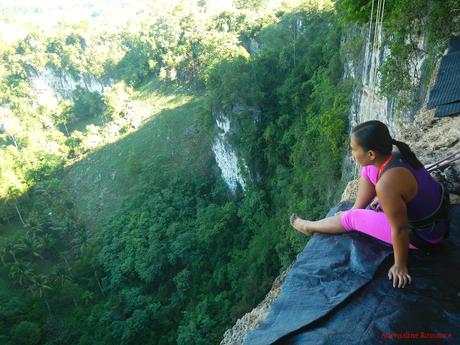
Just having fun—and trying to overcome the vertigo. Here we are, trying to get as close to the edge as possible. Tupe seemed to be the bravest of the first clients; he stood closer to the ledge’s lip than the two of us! Hehehehe!
We know that we were properly hooked to the safety line, but we still felt extremely nervous and shaky being so close to the abyss.

(Photo credit: Mark Battung)
Be careful, Sweetie! Check out how close Sweetie is sitting down on the slopey, slippery edge! Good thing she’s safely tethered to the safety line. She tried to convince me to sit beside her, but I was—let’s just say—too shy. Hehehehe!
A large portion of the cliff is covered by dense vegetation.
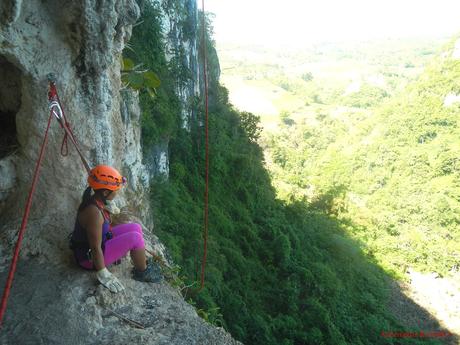
The Descent
After we had our fill of photos, it was time to pack up and prepare for our long descent. We donned our safety gears, and the guides assisted us in setting our abseil devices and doing last-minute checks.
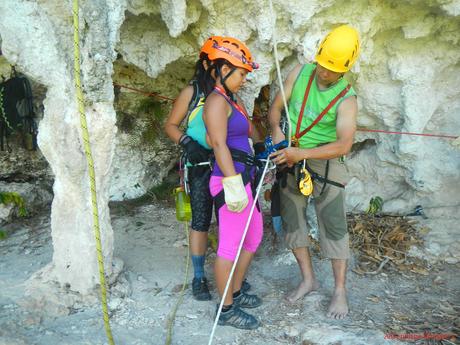
To descend from the lines, each of us used a Petzel Stop device. Unlike friction-brake Figure 8s and ATCs that we typically use to rappel down a line in our rock climbing sojourns, the Petzel Stop is an auto-locking mechanical device which uses a camming action to hold the rope.
Slowly pressing on the red lever eases up the pressure, allowing the rope to slide through and, subsequently, propels the climber down. Releasing the lever tightens the camming pressure, allowing the climber to stop his descent.
For long rappels like this, the Petzel Stop is safer and more advantageous than tubular devices.
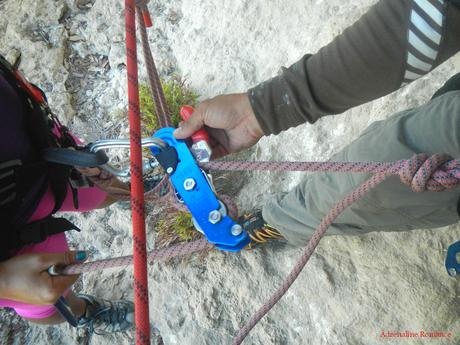
Mark abseiled first to the transition ledge so he could set up a rest stop. Abseiling all the way down to the first ledge can be done, but stopping at the transition ledge is strongly recommended. Doing so is important so equipment rectifications and adjustments can be done before proceeding to the ground.
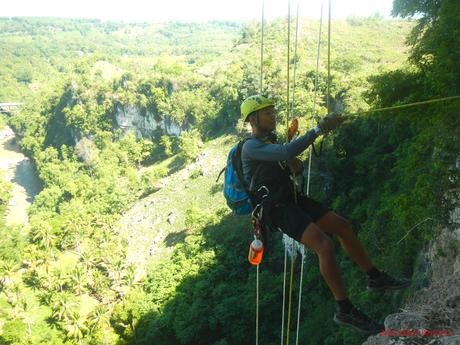
Next to Mark, I attached myself to a line and swung outside the ledge. My cow’s tail is attached to a guide rope so that I won’t swing abruptly outside the ledge. A sudden swing is quite disconcerting and stresses the main line.
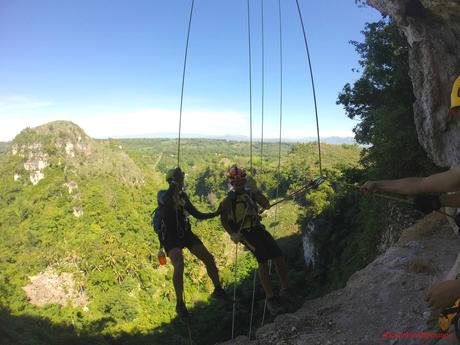
While waiting for Donna and Sweetie, I took a photo with my camera pointed down. Yes, that’s how the ground (more specifically, the treetops since we can’t actually see the ground) looks like from 480 feet up! It was the first time we saw what is directly below us since our ascent the night before; yes, it’s scary and exhilarating at the same time!

After Donna and Sweetie attached themselves to their lines, they joined me out the ledge. Once each one was tethered to one another, we started our descent.
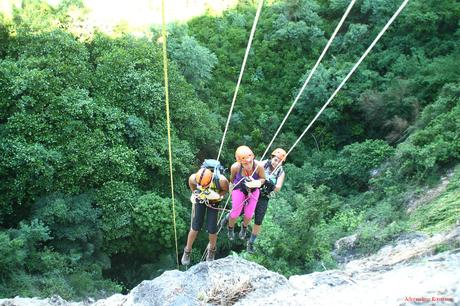
(Photo Credit: Tupe Diaz)
That’s the view from the ledge from a few feet down. We’ll see you later when we touch down, guys! Goodbye for now, bivouac ledge. Thank you for letting us stay for a beautiful, pleasant, and relaxing night.
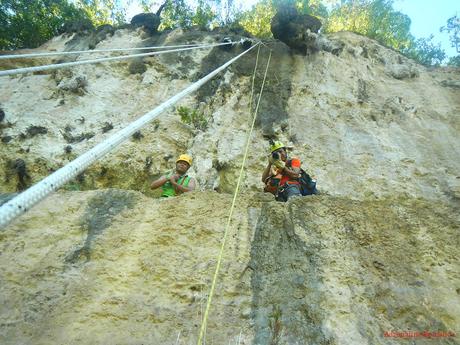
Donna is a true and happy adventurer!
The weight of the backpack tends to make her lean away from the rope. This is quite exhausting as it stresses the abdominal muscles, which I found out during my descent. Yes, descending with a heavy backpack gives you a total but unwanted abdominal workout.
Donna uses an ingenious contraption to alleviate this discomfort. The purple cord and carabiner assembly which is fastened through and around her arms pulls her closer to the rope.
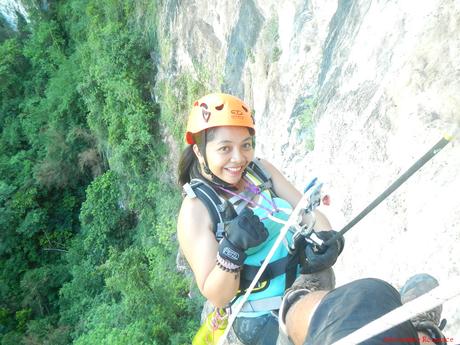
Huge tufas and stalactites hang from the rock wall. Each one of those geographical features in the photo below is taller than a person with average height.
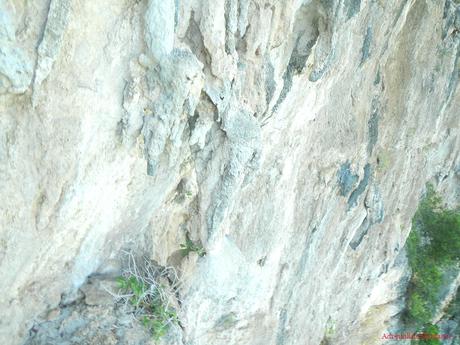
A rappel party? Come on, guys! Do you really have to take photos while you’re hanging hundreds of feet in the air? Oh, yes, they definitely can do this! Remember the Petzl Stop? The device locks the rope in place, allowing them to free their hands and do whatever they want.
So, come on and shoot! And laugh! And drink! And even take a snack!
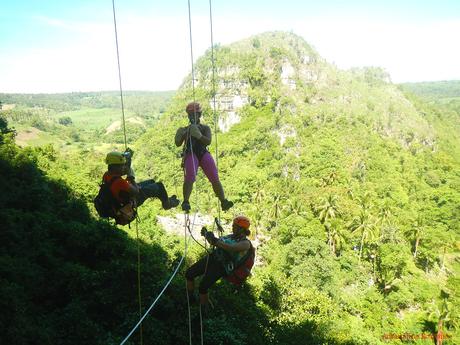
You do remember Mark being the first to descend to the transition ledge, don’t you? Well, that’s because he needs to throw the climbers a line so he can pull us toward the ledge. Without a thrown line, it is simply impossible to get to that ledge.
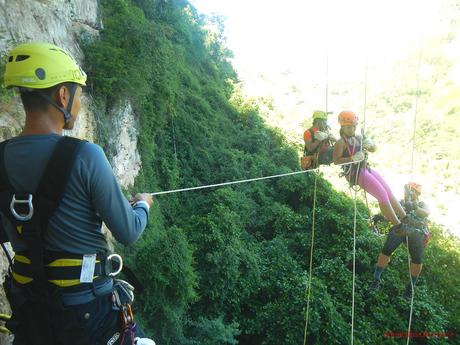
The others relaxed for a little bit on the transition ledge while I made adjustments to my backpack.
Can you see that long notch that is naturally carved into the wall? Sometime in the future, Mark and his team are going to establish a long via ferrata route that passes through that ledge and around the karst formation. That is something to look forward to!
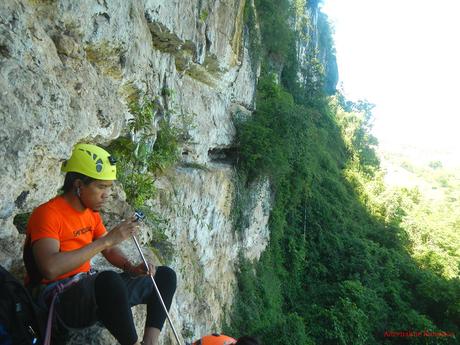
After 10 minutes, we re-attached ourselves to our lines and started abseiling down to the first ledge to prepare for a re-belay. At this point, we can see the ground! But with more than 200 feet to go, that is still a long way down!
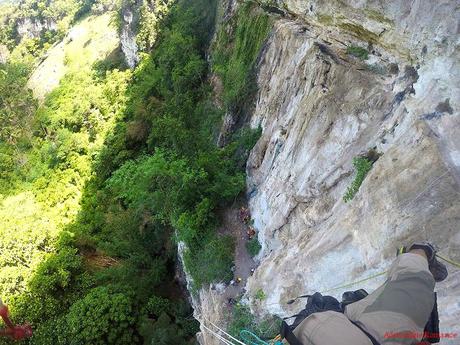
(Photo credits: Mark Battung)
Sweetie just can’t resist taking photos while on rappel. Check out just how far the lines are from the rock wall. And yes, it was a beautiful, cloudless day.
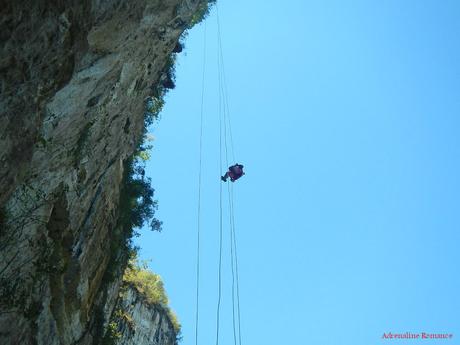
One by one, Mark pulled each climber to the first ledge for a re-belay. We were now more than a hundred feet off the ground.
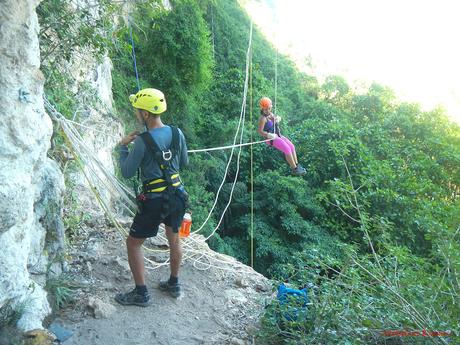
While waiting for the others, Donna carefully made her way down to the lip of the ledge to rig a single line so that everyone can abseil to the ground. Since abseiling is faster and easier than ascending, only one line was necessary.
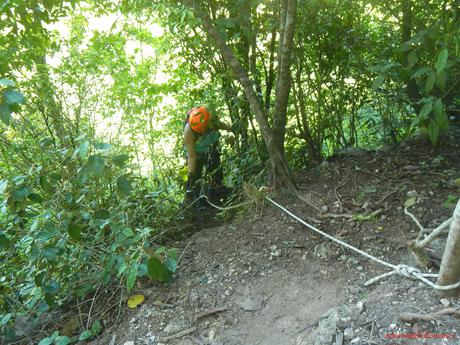
While waiting for Donna’s signal to go down, we took time to admire at the gigantic and magnificent rock wall that has housed us for a night. The majesty of the Kiokong White Rock Wall is simply overwhelming, and we felt humbled in its shadow. We could hardly believe that we ascended and descended a rock wall of such size, height, and scale.
As you can see, this is really a climber’s haven and has the potential to become one of the best climbing destinations in the Philippines. Hundreds of routes—single pitch or multi-pitch—can be bolted here. That still leaves room for a long, circuitous via ferrata route and several more vertical bivouac routes.
In addition, the wall is in close proximity to the highway and modern conveniences.
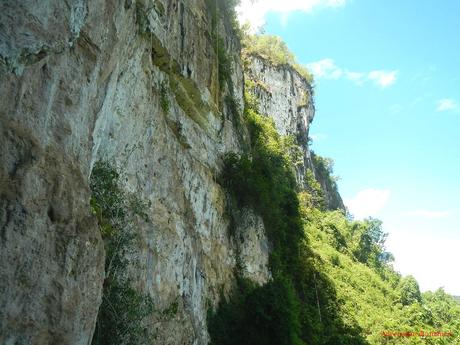
After half an hour, we heard the radio crackle. It was Donna, and she told us that the rappel line has been rigged. We were now ready to abseil down and finally stand on good, ole’ solid earth.
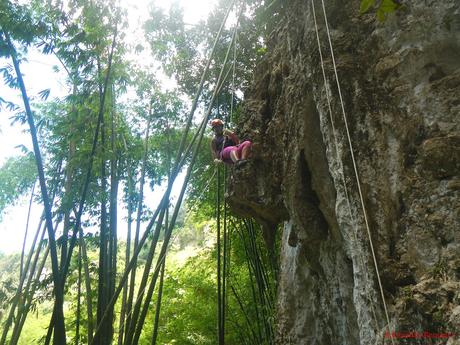
Whoops! Oh, don’t worry, Vince was fine. He just lost his footing after touching the ground. One by one, each team member safely abseiled and welcomed the ground with open feet.
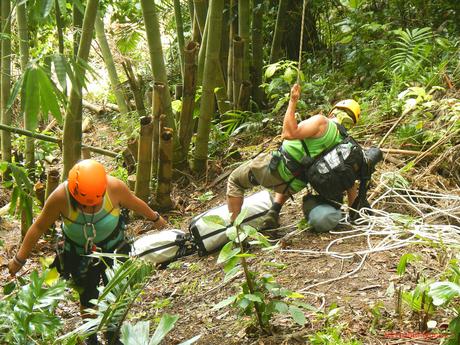
Be careful with this deep hole, which is directly in the vicinity of the landing zone. Mark said it was an old hole that was excavated by local treasure hunters who believed there was precious gold hidden here. Mark already asked the LGU to cover it up to avoid any untoward accidents.
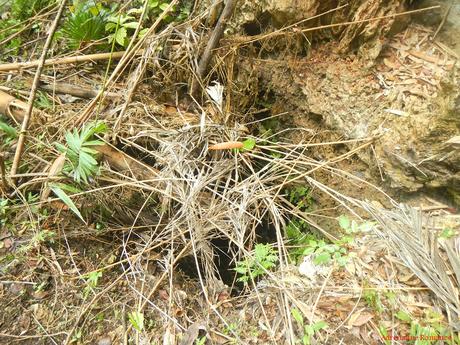
With everyone down and the rope threaded through the anchor, the guides pulled one end of the rope so that it would fall back to the ground. The considerable level of friction generated by the rope against the anchor as it is being pulled required the strength of three guides.
Also, check out the covered gold hole right behind Donnie.
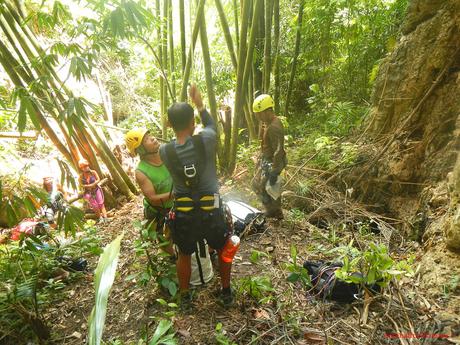
After stuffing back all ropes and our climbing equipment, we trekked back to the staging area, eager to have a real, hot and filling meal paired with ice-cold soda.
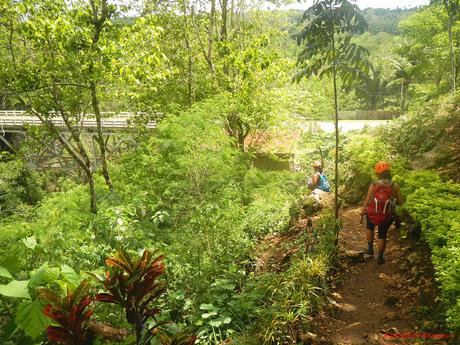
And we got our wish and a fitting reward at the end of an extreme adventure! Mark and Donna took us to a humble roadside restaurant that specializes on hot, spicy, and delicious bisayang manok na tinola and sumptuous grilled fish. We paired our meal with two bottles of refreshing soda.
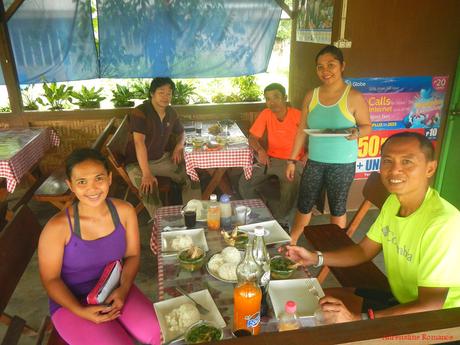
Adventure Technology Outfitters and the Quezon, Bukidnon LGU have really made something spectacular here—-something that we, as Filipino adventurers, should be proud of. They have developed a venue and created an activity that satisfy your carving for adventure and adrenaline, make you realize just how strong and resilient you are, allow you to get over your unfounded fears, and let you appreciate the immense beauty of our country from hundreds of feet in the air.
We have completed the first and only vertical bivouac adventure in the country, and it is an extreme adventure that we will never forget for the rest of our lives. Now, it’s your turn!
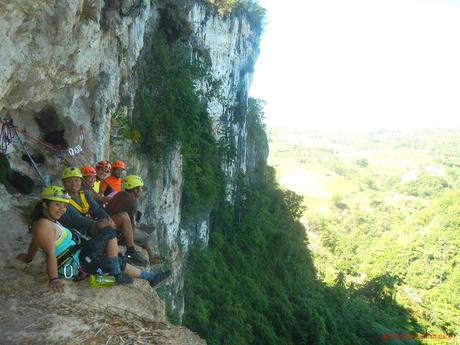
Special Thanks
We would like to give special thanks to Mark and Donna Battung of Adventure Technology Outfitters for giving us the opportunity to try out this amazing outdoor activity. It was an honor being among the very first clients of the first and only vertical bivouac adventure in the Philippines. Thank you too for taking good care of us during our visit in the verdant province of Bukidnon.
Thank you too to guides Jboy Sanchez and Vincent Chan for keeping us safe all throughout this adventure.
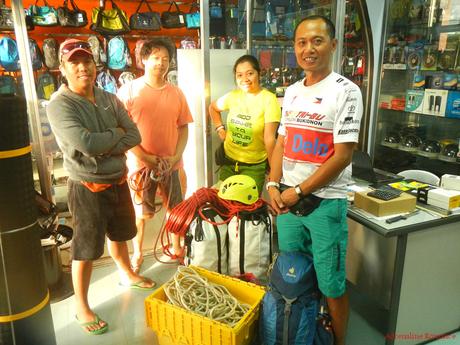
Our gratitude also goes to Donnie Quiterio who personally assisted us during our ascent and descent. He was assigned as our personal guide, and he’s very accommodating. Donnie is team leader of an elite rescue team.
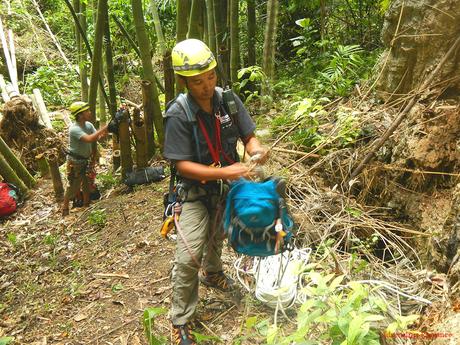
Last but not the least, we would like to thank Tupe Diaz of Trekkero for accompanying us. Like us, Tupe is a blogger who has a fiery passion for travel and adventure.
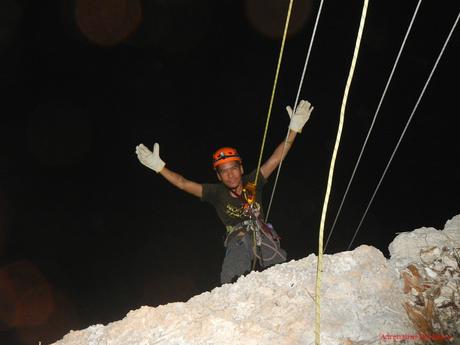
(Cover Photo Credit: Mark Battung)
Itinerary
Day 1
7:00 AM – arrival at Cagayan de Oro pier, head to Agora Bus terminal
7:30 AM – depart Agora Bus terminal, head to Maramag, Bukidnon*
11:00 AM – pick up from bus terminal, arrival of guests and registration
12:00 PM – lunch
1:00 AM – last minute-shopping, buy or cook packed dinner and breakfast
2:00 PM – orientation, equipment setup, gear familiarization, and checking for proper fitting
3:00 PM – start trek to jump-off
3:15 PM – start of the ascent
8:15 PM – arrival at the bivouac ledge
8:30 PM – light dinner, socials
10:30 PM – lights out
Day 2
5:00 AM – wake up
6:00 AM – light breakfast
9:00 AM – Start rappelling down
10:00 AM – Touchdown
12:00 PM – Lunch
1:30 PM – head back to Maramag Bus Station, ride a bus back to Cagayan de Oro City
If you are coming from Cagayan de Oro City, tell the driver to drop you off at the Maramag Bus Station. If you’re coming from Davao, tell the driver to drop you off at the Quezon Bus Station. You can arrange with Adventure Technology Outfitters for a pickup and drop off from and to those bus terminals.
Budget**
- Vertical Bivouac Fee: See Part 1 (You can also find the itinerary and contact details for this adventure in Part 1)
- P 20 – jeepney fare from Cagayan deo Oro Port to Agora Bus Terminal
- P 230 – Bus fare from Agora Bus Station, Cagayan de Oro to Maramag Bus Station (same rate applies on the return trip)
- P 215 – Bus fare from Davao City to Quezon Bus Station (same rate applies on the return trip)
** We did not include our expenses for meals, snacks, souvenirs, tips, and other fees in this rate sheet as you may have different needs, preferences, itineraries, miscellaneous transportation, and sharing scheme from us. Note that all figures are subject to change without prior notice.
Important Reminders
1. You should be reasonably fit to try out this adventure as this requires ascending a rope. Please consult with your physician if you are fit enough to take on this activity, especially if you are suffering from a cardio-vascular related ailment or a past injury.
2. Adventure Technology Outfitters will provide a burner, set of cups, and kettle for heating the water for your beverage and coffee drinks. They will also haul your bags, apparels, water, and food.
3. It can get chilly at the bivouac ledge. If you don’t have a sleeping bag, let the provider know in advance so they can acquire one for you.
Tips
1. Adventure Technology Outfitters discourages you from cooking food meals at the bivouac ledge as it takes time to cook. More importantly, the fumes, vapors, and oils that emmanate from cooking food will contaminate the limestone in the cramped quarters of the ledge. Bringing pack meals would be better.
2. You can call or text at the bivouac ledge as the area has a strong network signal both from Smart and Globe.
3. Light to moderate rainfall is not a problem because the overhanging wall will protect you from getting really wet.
4. The cliff basks in the full glory of the sun. Thus, it radiates unbearable heat from 10:00 AM to 2:00 PM. That’s why ascents usually start at 3:00 or 4:00 PM to escape the heat. Ascending under the full power of the sun can quickly drain you.
5. Listen carefully to the guides. They will brief you on gear usage, safety protocols, etiquette, and more.
6. Relax and enjoy the climb. The extreme height may scare you, but as long as you followed the safety procedures correctly, you are quite safe. Remember that your gear is over-engineered, and the chances of gear failure are very slim. Besides, the guides will make sure you have redundant protection.
7. To save strength and avoid over-exertion, use your feet more than you use your arms; in other words, push your feet against the foot strap rather than pull yourself up on the ascender. You will realize that you can get more leverage if you push your foot directly from under your butt.
8. Do not be afraid to tell the guide if you feel extremely nervous. They will provide support during your ascent and descent. If all else fails, they have the option to simply haul you up (but you don’t want that, do you?).
9. Always make sure that the two lines of your cow’s tail should always be clipped to the main safety line. In case you have to disengage your cow’s tail such as when you arrive at a point of connection, make sure one of your lines is clipped to the main safety line.
10. Pack light but bring the following
- water (at least 2 liters)
- dry-fit shirt
- trekking shirt or shorts
- trekking shoes
- flip-flops (for more comfortable footwear at the bivouac ledge)
- sweater
- arm guards
- extra dry clothes
- sleeping clothes
- blanket or sleeping bag
- packed meal for dinner and breakfast
- snacks
- sleeping bag
- toiletries
- personal medication

